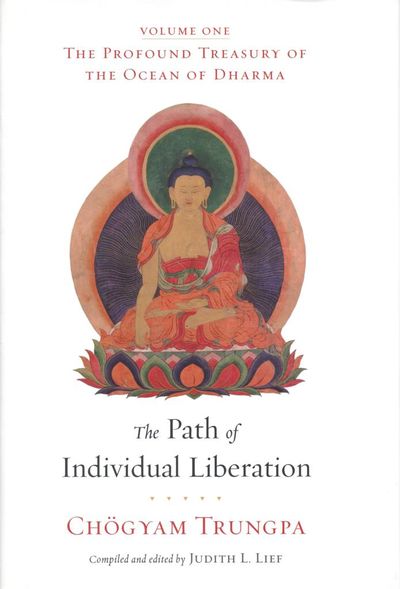- Part One: Entering the Path
- 1. Beginning at the Beginning3
- 2. The Frozen Space of Ego6
- 3. The Path of Individual Salvation11
- 4. Opening to the True Dharma21
- 5. Joining Study and Practice40
- 6. Achieving Sanity Here on Earth46
- 7. The Path, the Vehicle, and the Traveler56
- 8. Relating with a Teacher61
- 9. The Painful Reality of Samsara65
- 10. Buddhadharma Fever81
- 11. Taking Refuge in the Three Jewels89
- 12. The Sutra of the Recollection of the Noble Three Jewels97
- 13. The Buddha100
- 14. The Dharma 113
- 15. The Sangha116
- Part Two: Discipline/Shila
- 16. The Loneliness and Joy of Discipline127
- 17. Taming the Neurotic Mind133
- 18. Cutting the Root of Samsara138
- 19. Continually Gnawing Rock144
- 20. Becoming a Dharmic Person155
- 21. Refraining from Harm165
- Part Three: Meditation/Samadhi
- 22. Simplicity173
- 23. Following the Example of the Buddha179
- 24. The Basic Minimum187
- 25. Taking Your Seat193
- 26. Breathing Out201
- 27. Labeling Thoughts207
- 28. Touch and Go212
- 29. Encountering Problems215
- 30. Leading a Spotless Life223
- 331. Resting in Shamatha231
- 332. Identifying Obstacles to Shamatha243
- 333. Antidotes to the Obstacles to Shamatha248
- 334. Cutting Thoughts and Short-Circuiting the Kleshas257
- 335. An Element of Magic264
- 36. Transcending Dualistic Mind267
- 37. Rediscovering Your Own Mind273
- 38. Mixing Mind with Space281
- 39. Mindfulness of Body285
- 40. Mindfulness of Life294
- 41. Mindfulness of Effort304
- 42. Mindfulness of Mind316
- 43. The Freshness of Unconditional Mind329
- 44. Beyond Picking and Choosing337
- 45. The Art of Everyday Living343
- 46. Glimpses of Emptiness348
- 47. Investigating the Subtleties of Experience353
- 48. Sharpening One’s Perception359
- 49. Self-Perpetuating Awareness367
- Part Four: The Four Noble Truths
- 50. The Snowballing of Deception373
- 51. Recognizing the Reality of Suffering377
- 52. Dissecting the Experience of Suffering382
- 53. The Power of Flickering Thoughts397
- 54. The Development of Set Patterns401
- 55. Perpetually Re-Creating Suffering406
- 56. Awakening and Blossoming421
- 57. Meditation as the Path to Buddhahood426
- 58. Transcending Samsara and Nirvana431
- 59. The Doubtless Path443
- 60. The Five Paths449
- Part Five: The Hinayana Journey
- 61. Shravakayana: The Yana of Hearing and Proclaiming467
- 62. Pratyekabuddhayana: The Yana of Individual Salvation478
- 63. The Lesser Path of Accumulation489
- 64. The Middle Path of Accumulation499
- 65. The Greater Path of Accumulation505
- 66. The Path of Unification511
- Part Six: Knowledge/Prajna
- 67. Ego: The Thought That We Exist519
- 68. Cutting Through the Numbness of Ego526
- 69. Taking the Teachings to Heart535


